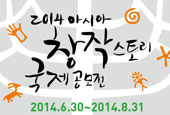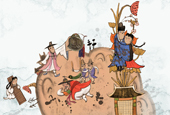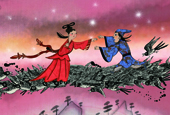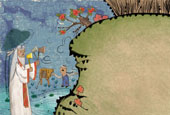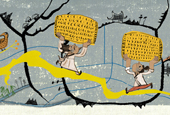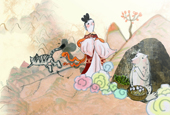View this article in another language
- 한국어
- English
- 日本語
- 中文
- العربية
- Español
- Français
- Deutsch
- Pусский
- Tiếng Việt
- Indonesian
The ancient Silla Kingdom (57 BC―AD 935), which occupied most of the Korean Peninsula at its height, ended up being one of the world’s longest-sustained dynasties, managing to subdue Baekje in 660 and mighty Goguryeo in 668. Amid such a vast history, however, there is a legend that starts with the kingdom’s 49th monarch, King Heon-gang (r. 875―886). According to the “Samguk Yusa,” an ancient collection of folktales mixed with historical accounts, King Heongang one day went on a walk along the beaches of what is now present-day Ulsan.
The walk wasn’t peaceful for long, however, as the skies suddenly blackened as an ominous fog diffused throughout the entire beach. Frightened, the king asked one of his prophets, “What could such an inauspicious sign mean?” “It is the doing of the Dragon of the East Sea, meant to caution you against doing evil,” the prophet replied.
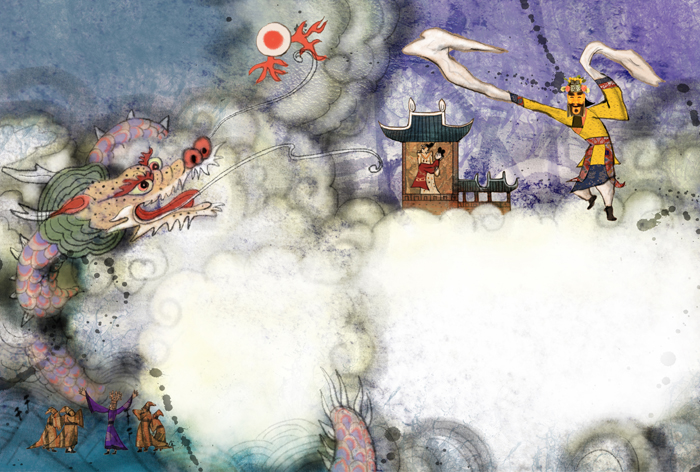
A Special Ambassador
King Heongang didn’t take such warnings lightly, and immediately commanded that a temple be built in honor of the dragon. As soon as he issued his orders, the skies instantly cleared, and the East Sea Dragon, apparently satisfied, appeared with his seven sons. Before anyone could say anything, the dragon family started performing a mystifying but beautiful dance directly before the king’s eyes. As soon as the performance was over, the East Sea Dragon informed King Heongang that he would send one of his sons to live with him in the palace and assist in royal affairs.
This son’s name was Cheoyong. Infinitely delighted, the king gladly accepted the dragon’s offer, and even arranged for Cheoyong to be married to one of the court’s most beautiful ladies. For a while, things went well: Cheoyong proved to be a useful assistant, as well as a fantastic entertainer, and his wife was considered by many to be most beautiful woman in all of Silla. She was so beautiful, in fact, that there were some who wanted to snatch her away from the unsuspecting dragon.
Among such greedy spirits was Yeoksin, or the God of Sickness. After observing Cheoyong’s habits and memorizing his daily routine, Yeoksin transformed himself into a normal human and snuck into Cheoyong’s quarters. Using his wicked magic, the God of Sickness befuddled Cheoyong’s wife, putting her under a stupefying spell, allowing him to have his way with her.
The Power of Dance
When Cheoyong returned and saw what had happened, instead of lashing out in anger he immediately burst into a mysterious dance, singing an entrancing tune all the while. Yeoksin, frightened at first, quickly became hypnotized by the mysterious power of Cheoyong’s dance and song.
Despite dragons’ great strength and power, Cheoyong’s ability to retaliate with art instead of violence struck Yeoksin with awe, and he soon found himself on his knees in front of the dancing dragon, begging for forgiveness. He vowed to never disturb Cheoyong ever again. He also swore that, from that day forward, he wouldn’t dare enter any room whose door displayed an image of Cheoyong.
It is said that the people of Silla thereafter developed a tradition of painting the image of Cheoyong onto their faces to ward off evil forces. The song that Cheoyong sung to Yeoksin became known as the “Cheoyongga,” or the “Song of Cheoyong,” and several traditional masks were made throughout the ages to represent the power of his song and dance.
Written by Felix Im
Illustrated by Shim Soo-keun
*The series of old Korean tales has been made possible with the cooperation with Korea Magazine.
The walk wasn’t peaceful for long, however, as the skies suddenly blackened as an ominous fog diffused throughout the entire beach. Frightened, the king asked one of his prophets, “What could such an inauspicious sign mean?” “It is the doing of the Dragon of the East Sea, meant to caution you against doing evil,” the prophet replied.

A Special Ambassador
King Heongang didn’t take such warnings lightly, and immediately commanded that a temple be built in honor of the dragon. As soon as he issued his orders, the skies instantly cleared, and the East Sea Dragon, apparently satisfied, appeared with his seven sons. Before anyone could say anything, the dragon family started performing a mystifying but beautiful dance directly before the king’s eyes. As soon as the performance was over, the East Sea Dragon informed King Heongang that he would send one of his sons to live with him in the palace and assist in royal affairs.
This son’s name was Cheoyong. Infinitely delighted, the king gladly accepted the dragon’s offer, and even arranged for Cheoyong to be married to one of the court’s most beautiful ladies. For a while, things went well: Cheoyong proved to be a useful assistant, as well as a fantastic entertainer, and his wife was considered by many to be most beautiful woman in all of Silla. She was so beautiful, in fact, that there were some who wanted to snatch her away from the unsuspecting dragon.
Among such greedy spirits was Yeoksin, or the God of Sickness. After observing Cheoyong’s habits and memorizing his daily routine, Yeoksin transformed himself into a normal human and snuck into Cheoyong’s quarters. Using his wicked magic, the God of Sickness befuddled Cheoyong’s wife, putting her under a stupefying spell, allowing him to have his way with her.
The Power of Dance
When Cheoyong returned and saw what had happened, instead of lashing out in anger he immediately burst into a mysterious dance, singing an entrancing tune all the while. Yeoksin, frightened at first, quickly became hypnotized by the mysterious power of Cheoyong’s dance and song.
Despite dragons’ great strength and power, Cheoyong’s ability to retaliate with art instead of violence struck Yeoksin with awe, and he soon found himself on his knees in front of the dancing dragon, begging for forgiveness. He vowed to never disturb Cheoyong ever again. He also swore that, from that day forward, he wouldn’t dare enter any room whose door displayed an image of Cheoyong.
It is said that the people of Silla thereafter developed a tradition of painting the image of Cheoyong onto their faces to ward off evil forces. The song that Cheoyong sung to Yeoksin became known as the “Cheoyongga,” or the “Song of Cheoyong,” and several traditional masks were made throughout the ages to represent the power of his song and dance.
Written by Felix Im
Illustrated by Shim Soo-keun
*The series of old Korean tales has been made possible with the cooperation with Korea Magazine.

